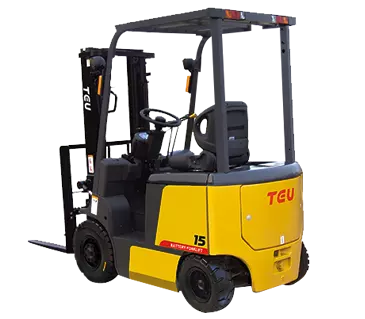Forklifts are essential equipment in warehouses, construction sites and manufacturing plants. They are used for lifting, carrying and stacking heavy objects, ensuring productivity and efficiency in all walks of life. Depending on the environment and specific tasks, different types of forklifts are designed with different functions to meet different operational needs. The following are some of the most commonly used forklifts and their applications.
Internal combustion forklifts mainly use diesel, gasoline or liquefied gas as a power source, suitable for outdoor or spacious environments, especially places that require large loads.
Advantages: strong traction and high load capacity, suitable for heavy object handling.
Disadvantages: relatively high noise and emissions, good ventilation needs to be maintained during use.
The power source of liquefied gas forklift (LPG forklift) is liquefied petroleum gas, which can be used both indoors and outdoors, and is suitable for poorly ventilated environments.
Advantages: relatively low emissions, moderate noise, suitable for use in changing environments.
Disadvantages: requires high fuel consumption costs, and liquefied gas storage and replacement require regular management.
Manual forklifts are completely dependent on manual operation and are suitable for the handling of light goods, especially in small spaces where electricity or internal combustion power is required.
Advantages: simple operation, low maintenance costs, suitable for short-distance handling.
Disadvantages: low load capacity and relatively slow work efficiency.
Electric forklifts mainly use batteries to provide power sources, suitable for indoor operations, such as warehouses, factories, etc.
Advantages: low noise, zero emission pollution, energy saving and environmental protection, suitable for long-term use.
Disadvantages: limited battery life, suitable for lighter loads, and long charging cycles.
Stacker forklifts, as the name suggests, are forklifts that can stack goods to a higher position and are suitable for high-bay storage environments. Generally used in warehouses, logistics centers and other environments.
Advantages: can improve storage space utilization, suitable for access to high-rise shelves.
Disadvantages: large size, complex operation, and require a certain amount of space for operation.
Forklifts with forward reach can move forward, making it easier to operate in a small space. Therefore, they are perfect for warehouses or workshops with limited space and narrow passages.
Advantages: Suitable for narrow passage operations, improving work efficiency.
Disadvantages: Relatively small load capacity, suitable for small and medium-sized cargo handling.
Rough terrain forklifts have strong passability and can cope with uneven and rugged ground. Suitable for outdoor, construction sites, mines and other environments, especially when working in harsh environments.
Advantages: Can operate on uneven ground, durable and adaptable.
Disadvantages: Relatively large size and weight, slow speed, suitable for rougher working environments.
These types of forklifts have their own characteristics. When choosing, you need to make a suitable choice based on the actual use environment, the type of items being transported and the load requirements. First of all, understanding their differences in design and function will help companies choose the forklift that best meets their needs. Choosing the right forklift can not only improve productivity, but also ensure the safety of operators and goods. If you have any questions about this product, please do not hesitate to contact us at any time, and we will provide you with the right answer.





